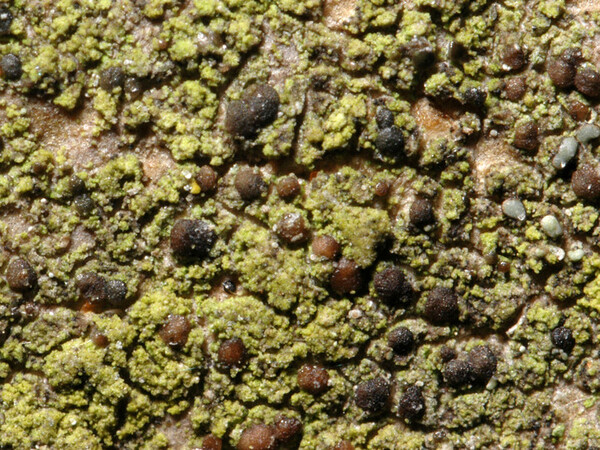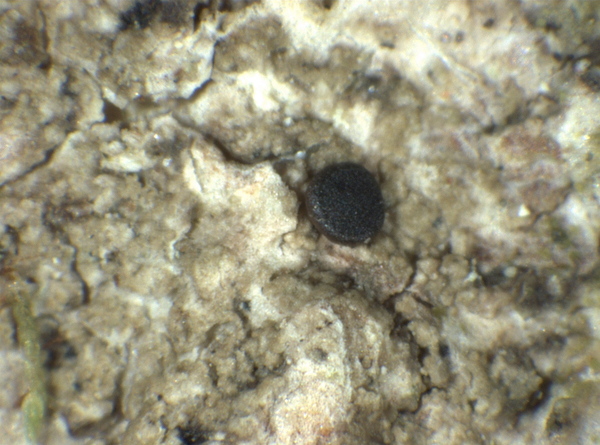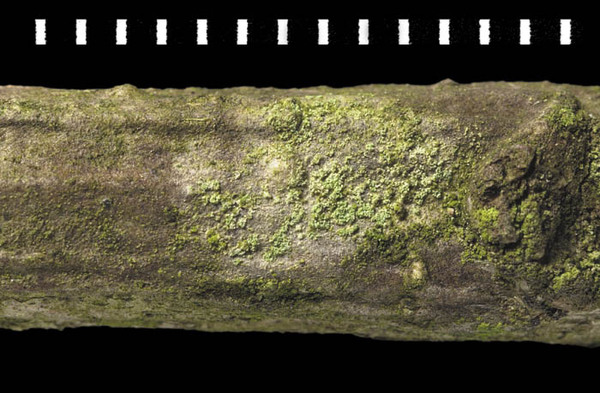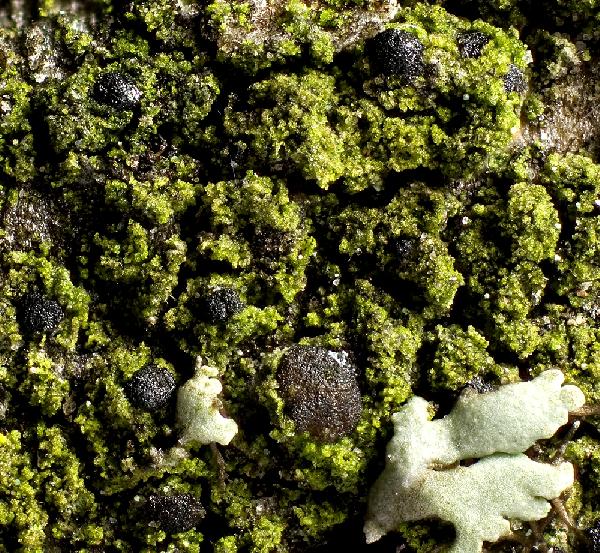Scoliciosporum chlorococcum (Stenh.) Vězda
Folia Geobot. Phytotaxon., 13: 414, 1978. Basionym: Biatora hypnophila var. chlorococcum Graewe ex Stenh. - Öfvers. K. Svensk. Vetensk.-Akad. Förh., 19: 473, 1863.
Synonyms: Bacidia chlorococca (Stenh.) Lettau; Bacidia interspersula (Nyl.) Zahlbr.; Bacidia salicicola Wheldon & Travis; Bilimbia chlorococca (Stenh.) Th. Fr.
Distribution: N - VG (Castello 2002, Martellos & Castello 2004), Frl, Ven (Lazzarin 2000), TAA (Nascimbene 2006c, 2014, Thor & Nascimbene 2007, Nascimbene & al. 2014, 2022, Nimis & al. 2015), Lomb (Zocchi & al. 1997, Furlanetto 2010), Piem (Piervittori 2003, Isocrono & al. 2006, 2006b, Valcuvia 2002, 2002b, Castino 2004, Furlanetto 2010, Matteucci & al. 2010), VA (Matteucci & al. 2008), Emil (Valcuvia & Savino 2000, Fariselli & al. 2020), Lig (Giordani & al. 2002, Brunialti & Giordani 2003, Giordani & Incerti 2008). C - Tosc (Loppi & Corsini 1995, Loppi & al. 1996c, 1997b, 1997e, 2004, Benesperi 2000a, Benesperi & al. 2007, Tretiach & al. 2008, Loppi & Baragatti 2011), Umb (Ravera 1998, Ravera & al. 2006), Laz (Stofer 2006, Munzi & al. 2007), Abr (Di Santo & Ravera 2012, Corona & al. 2016), Sar (Stofer 2006, Rizzi & al. 2011, Di Nuzzo & al. 2022). S - Bas.
Description: Thallus crustose, thin, finely granular, dirty green, greenish grey to greenish black, sometimes eroded and exposing the medulla, giving the thallus a sorediate appearance. Apothecia biatorine, 0.2-0.3 mm across, soon convex and immarginate, at first brown, then often black, usually glossy. Proper exciple of radiating, branched and anastomosed hyphae; epithecium brown, K-, N-, rarely with a greenish tinge and then K-, N+ purple; hymenium colourless, I+ blue; paraphyses strongly branched and anastomosing up to the upper part, immersed in a gelatinous matrix and resembling excipular hyphae; hypothecium colourless. Asci 8-spored, broadly clavate, surrounded by a gelatinous, amyloid sheet, with a well-developed, amyloid tholus containing a widely cylindrical axial body and a poorly developed, bluntly conical ocular chamber, more or less Lecanora-type. Ascospores (4-)7-septate, hyaline, fusiform, thinner at one end, straight or slightly curved, (20-)25-30(-40) x 4-5 μm. Photobiont chlorococcoid. Spot tests: thallus K-, C-, KC-, P-, UV-. Chemistry: without lichen substances.Note: a widespread holarctic, ecologically wide-ranging species found on bark (especially of Fagus), lignum, and more rarely siliceous rocks, tolerant to air pollution; several earlier and also some recent records, however, need confirmation.
Growth form: Crustose
Substrata: bark and rocks
Photobiont: green algae other than Trentepohlia
Reproductive strategy: mainly sexual
Commonnes-rarity: (info)
Alpine belt: absent
Subalpine belt: extremely rare
Oromediterranean belt: absent
Montane belt: rather common
Submediterranean belt: rather rare
Padanian area: very rare
Humid submediterranean belt: rather rare
Humid mediterranean belt: rare
Dry mediterranean belt: very rare
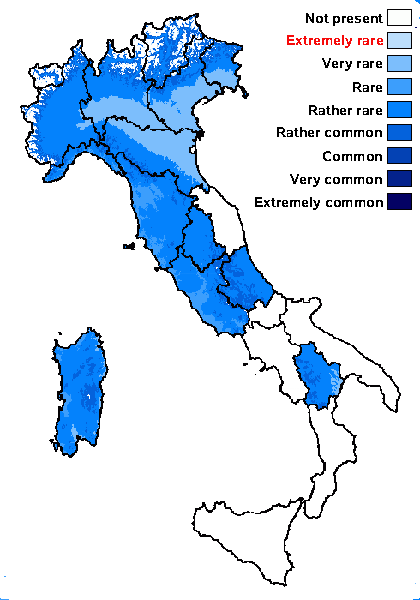
Predictive model
Herbarium samples
Growth form: Crustose
Substrata: bark and rocks
Photobiont: green algae other than Trentepohlia
Reproductive strategy: mainly sexual
Commonnes-rarity: (info)
Alpine belt: absent
Subalpine belt: extremely rare
Oromediterranean belt: absent
Montane belt: rather common
Submediterranean belt: rather rare
Padanian area: very rare
Humid submediterranean belt: rather rare
Humid mediterranean belt: rare
Dry mediterranean belt: very rare

Predictive model
| Herbarium samples |
 Index Fungorum
Index Fungorum
 GBIF
GBIF
